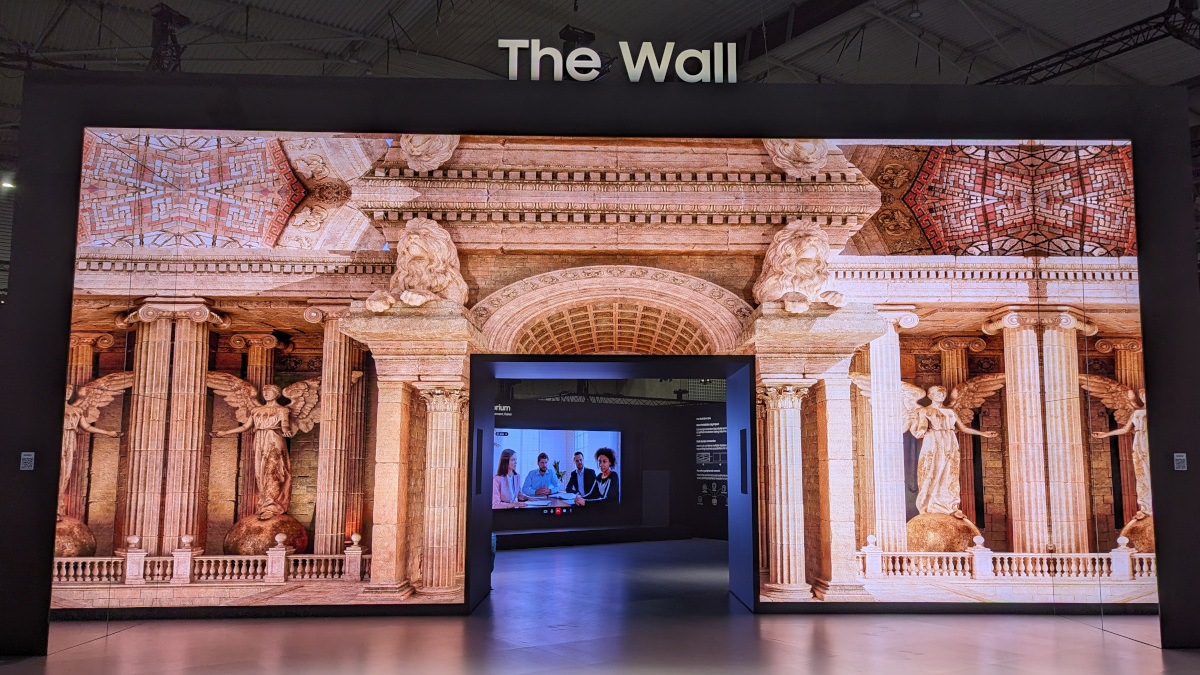Barcelona | With IoT for business and VXT, Samsung positioned itself as a platform provider at ISE 2024. The Google-certified WAD series and the 105-inch QPD-5K display complement the domains education and collaboration, alongside The Wall and Transparent MicroLED.
This year at ISE, Samsung’s booth showcased a departure from last year’s “Black Fortress” concept, featuring two eye-catching installations. The first, hard to miss, was a large The Wall installation with a clever mirror solution, adding extra depth. The content for the 1.26-pixel pitch screen of the IW012C series was created by the Korean design studio Dstrict that’s famous for its artistic DooH campaigns.
The second eye-catcher was smaller, more subtle, and transparent. Samsung brought the Transparent MicroLED to ISE, which was previously showcased at CES. The presentation cleverly incorporated regular displays in the background, allowing for additional information and depth.
Amit Chatterjee, Manager Presales Solutions at Samsung, sees potential for the transparent solution in various applications, including Premium Retail. Amit Chatterjee, Manager Presales Solutions at Samsung, sees the potential of the transparent solution in various application areas, including premium retail. The transparent crystal-clear LED could create more depth in sales areas and offer the opportunity to put the products themselves in the foreground.
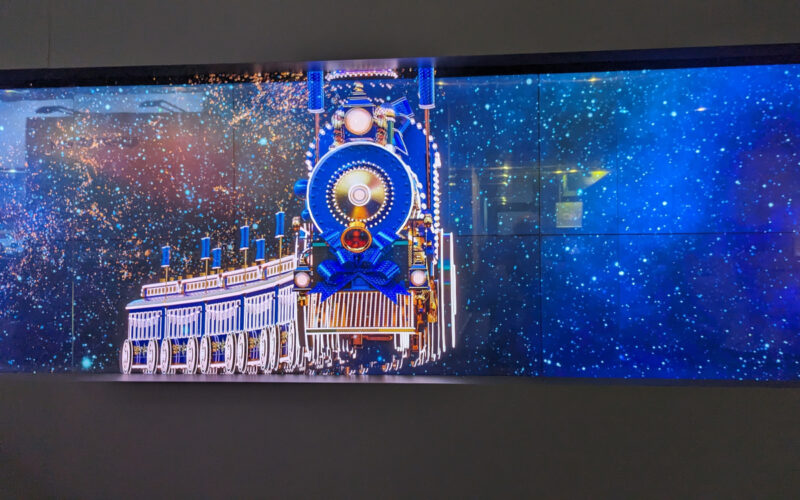
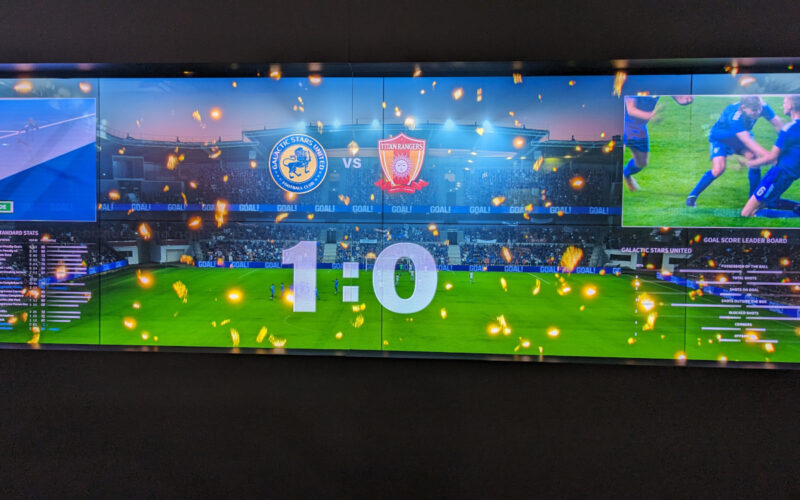
Samsung employs a new technology for the production of the Transparent MicroLED, similar to the TFT process, aiming to increase efficiency and reduce production costs. This process is expected to be utilized in future generations of The Wall.
The depth this double display installation created was particularly impressive, as was the degree of transparency; only the edges were clearly visible. The MicroLED has a 60-inch diagonal size, with the ability to be placed side by side or stacked vertically. Samsung claims that the final product’s size can be customized. According to Samsung, the size of the finished product can be individually adjusted.
The transparent MicroLED is based on a new technology that is manufactured in a way similar to the TFT process. This is intended to increase efficiency even further and thus reduce production costs. The process will also be used for the next generations of The Wall.
Samsung is still holding back on further details for the prototype – as well as on fixed deadlines. The product is anticipated to enter the market around 2025.
IOT ecosystem for B2B
Moving to less spectacular but equally interesting developments inside the stand, Samsung introduced Smartthings for Business—a B2B networking solution based on its Smartthings technology for the home. This solution allows for the straightforward control of networks through an IoT application, extending beyond Samsung devices to any Smartthings-compatible devices. Businesses can manage applications such as heating, air conditioning, lighting, and screens through a unified interface, offering automation for room management and energy savings.
Smartthings for Business is provided through an API tailored to each company by integrators. Samsung plans to integrate the Smartthings application into the new VXT platform.
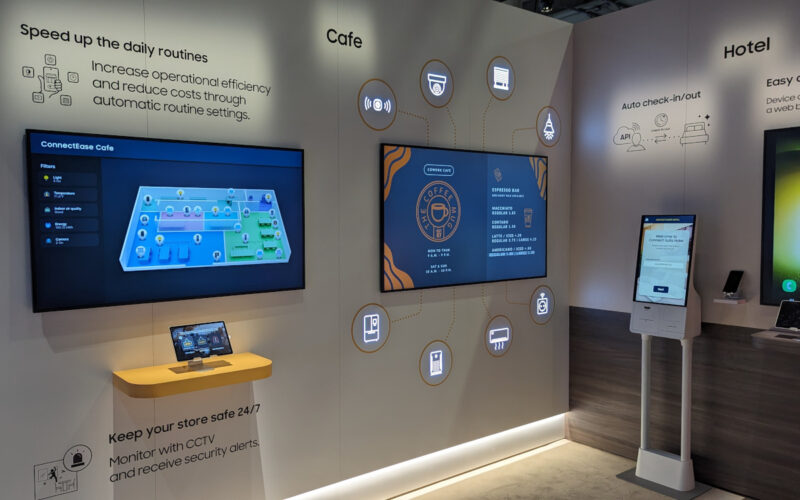
VXT: The new cloud-based signage platform
The freshly launched platform VXT had its own area within the Samsung booth: it focused on demonstrating ease of use for end customers, particularly for standard signage applications. It showcased Samsung’s effort to move away from its closed ecosystem, offering solutions for selected Android platforms, with a Windows version planned for the future.
The Wall was impressive to look at from the outside, and of course further applications of the premium LED products could be seen inside. In the display sector, Samsung expanded its offerings with two notable releases.
EDLA-certified display
For the education sector, Samsung introduced the interactive WAD series, expected to launch in mid-2024. The Android 13-powered series, available in 65-, 75-, and 86-inch models, comes with a Google EDLA certificate—a first for Samsung in Education displays. The WAD series competes with displays already certified with EDLA. Equipped with infrared touch technology supporting up to 40 multitouch points, the WAD displays offer a Multi-Windows mode for concurrent task execution. The series includes a 3-in-1 USB-C port for device charging, an HDMI output for content sharing, stereo front speakers, a stylus holder, and handles for easy installation.
In addition, the device management solution offers remote monitoring and control of classroom displays. With Advanced Messaging, important or urgent messages can be displayed immediately.
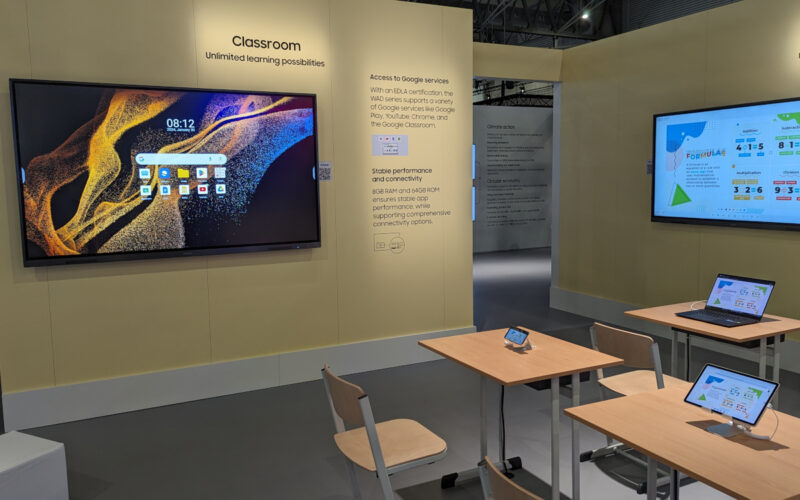
New 105-inch display
Samsung also introduced a new 105-inch display for collaboration, emphasizing a partnership with Cisco. The 21:9 QPD-5K model is designed to optimize the front-row experience when connecting video conferencing devices certified for Microsoft Teams. Samsung plans to launch the 105-inch display by the end of 2024, with the Cisco partnership extending to other Samsung 4K UHD Smart Signage displays.
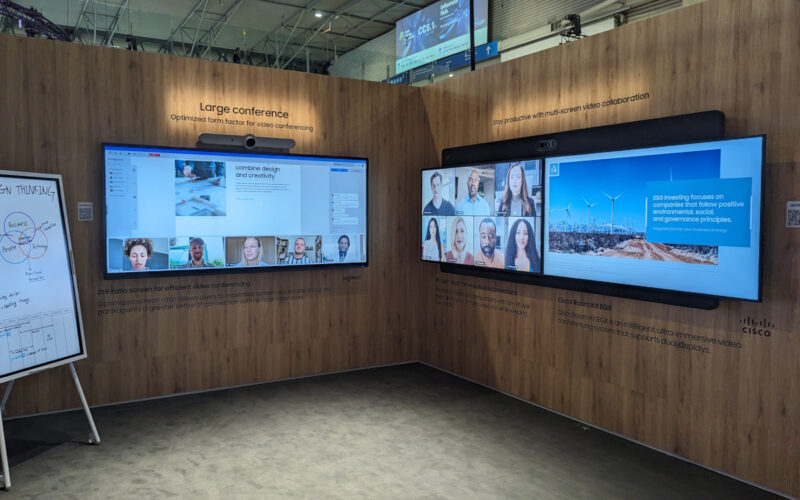
Booth centered around three pillars
Another part of the stand was dedicated to Samsung’s green signage activities. Here, the company highlighted various measures that have long been implemented within the group – including the use of marine plastic in certain display and monitor housings. However, it is difficult to give a concrete figure here, as the proportion varies greatly from product to product.
Amit Chatterjee emphasizes that the group is taking many small steps that make a big difference on a large scale: “For example, we have designed the QXC series to be up to 40 percent thinner. This allows us to save on packaging and transport more displays on a pallet.”
Overall, the Samsung booth communicated three pillars this year, which can certainly be understood as an announcement for the coming year: Targeted strengthening of the portfolio in certain verticals as well as the expansion of the service and platform concept with VXT and Smartthings. And the message that digital signage simply looks good – when good content meets high-tech LEDs.

